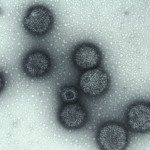Link to Pubmed [PMID] – 12762852
In Silico Biol. (Gedrukt) 2003;3(1-2):127-43
Recognition sites for type II restriction and modification enzymes in genomes of several bacteria are recognized as semi-palindromic motifs and are avoided at a significant degree. The key idea of contrast word analysis with respect to RMS recognition sites, is that under-represented words are likely to be selected against. Starting from over- or underrepresented words corresponding to RMS recognition sites in specific clades, the specificity of unknown R-M systems can be highlighted. Among the known restriction enzymes, that are described in the REBASE database of restriction and modification systems, many of their recognition sites are still uncharacterized. Eventually, this motivates studies aimed at assessing horizontal transferring events of RMS in micro-organisms through the analysis of word usage biases in well-determined genomic regions. A probabilistic model is built on a first-order Markovian chain. Statistics on the k-neighborhood of a word is carried out to assess the biological significance of a genomic motif. Efficient word counting procedures have been implemented and statistics are used for the assessment of the significance of individual words in large sequences. On the basis of the set of most avoided words, and in accordance to the IUPAC coding standards, suggestions are made regarding potential recognition sequences. In certain cases, a comparison of avoided palindromic words in taxonomically related bacteria shows a pattern of relatedness of their R-M systems. For strengthening this analysis, the primary protein structure of all type II R-M systems known in REBASE have been blasted against the nr-GENBANK database. The combination of these analyses has revealed some interesting examples of possible horizontal transfer events of R-M systems.

